
Background information
Visit to the largest Japanese garden in Europe: Sabine Rusch reveals the secret of garden art
by Darina Schweizer

I’d always been too grossed-out by so-called beneficial insects to weaponise them against fungus gnats, moths and other pests. But that changed when I met the roundworms, parasitic wasps and predatory mites living at Andermatt Group AG. I’m now a huge fan of these helpful little creatures.
Summer 2024. I no longer squirm at the sight of roundworms. In fact, I love them! Here’s what’s changed.
Brutal? Sure. Environmentally friendly? That too. «Beneficial insects are the most sensible alternative to pesticides,» says Silvan. «They can’t be overused, and they don’t leave harmful residues.» Once the ladybird has done its job, it scurries off and flies away.
Switzerland has more than enough greenflies and other pests to feed its appetite. Beneficial insects, on the other hand, are scarce – a situation created by pesticide use, habitat loss as a result of building-sealing and heavy agriculture, and other causes. If more beneficial insects are used, the pest population decreases. In turn, a decline in food supply reduces the number of beneficial insects. This creates ecological balance.
However, according to Silvan, not all beneficial insects are equally beneficial. The Asian ladybird, for example, which was introduced to Switzerland around 25 years ago, is an effective and popular pest controller. On the other hand, it’s very invasive and eats many helpful insects, creating an imbalance. «Native species such as the two-spotted ladybird should always be first choice,» Silvan says.
Just as the ladybirds were successfully put to use outdoors, some beneficial insects can be used indoors. Silvan takes out a small tube. Inside, it’s buzzing like crazy. At first glance, the bugs in the tube look like fungus gnats. In reality, they’re tiny parasitic wasps. Now it’s time for the moths typically found in kitchen cupboards or wardrobes to face the music.
Having set my initial feelings of disgust to one side, I’m now ready to face my arch enemies: nematodes or roundworms. Silvan takes out a plastic bag containing a beige powder. These beneficial bugs are sent out to buyers by post. As they have a short shelf life (their only disadvantage compared to pesticides), they need to be used quickly.
Huh, is that it? «Yes,» says Silvan with a laugh. «They’re barely visible with the naked eye, but there are actually three million nematodes in here.» I gulp. «How big do they get?» I ask hesitantly. «They stay this size, but you do get more impressive specimens. The largest nematode in the world parasitises sperm whales, and can grow up to eight metres long.»
It’s taken time for the public’s awareness of beneficial insects to increase. «I think it’s great that people are learning more about plants and how nature can fight pests,» Silvan says.
That’s exactly what I’m trying to do. Instead of seeing roundworms as harmful parasites, I now consider them useful helpers. I’ve befriended pretty ladybirds and wormy nematodes alike. I think we see weeds in a similar way. The line between «good» and «bad», gross and loveable, is always drawn by humans. The very organisms that happen to be the greatest pests of all.
What’s your experience of using beneficial insects? Let me know in the comments.
I love anything with four legs or roots - especially my shelter cats Jasper and Joy and my collection of succulents. My favourite things to do are stalking around with police dogs and cat coiffeurs on reportages or letting sensitive stories flourish in garden brockis and Japanese gardens.
Interesting facts about products, behind-the-scenes looks at manufacturers and deep-dives on interesting people.
Show all
Background information
by Darina Schweizer

Background information
by Darina Schweizer

Background information
by Ann-Kathrin Schäfer
Summer 2023. Fungus gnats are swarming around my newly sprouted, indoor-grown herbs like tourists around an all-inclusive buffet. While on the lookout for a remedy for the disaster, I come across roundworms for the first time. Every inch of skin on my body’s crawling. I want to get rid of the gnats, not replace them with worms! And that’s how my herbs meet their untimely demise.
With gently rolling hills and tinkling cowbells, the drive to Grossdietwil in the canton of Lucerne is as idyllic as the town’s «All about nature» tagline. This is where Andermatt Group AG, Switzerland’s leading producer of biological plant protection products, is located. The company’s product range includes not only bottled solutions, but also live beneficial insects such as roundworms, predatory mites, parasitic wasps, ladybirds and much more.
Production Manager Silvan Bosshard takes me to see the creepy-crawlies. We start off with his favourites, the two-spotted ladybird aka «Adalia bipunctata». Andermatt Group breeds the bugs, but it’s staying tight-lipped about how exactly this is done. Even so, the pretty insects pique my interest. After all, I’m a big fan of Ladybug Francis from the Pixar classic A Bug’s Life.
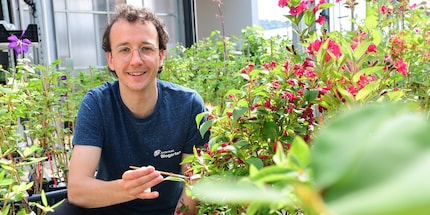
The real ladybirds are every bit as ferocious as the movie character. When Silvan places one on an azalea leaf, it makes a beeline for the greenflies on the stem of the plant. «The ladybirds can sniff them out through pheromones in the air,» Silvan explains. The ladybird slowly approaches its prey. Grasping it in its powerful jaw (the mandibles), it begins to crunch down on it. This breaks open the shell, giving the ladybird the chance to treat itself to a delectable cocktail. It sucks every last drop out of the louse before moving right on to its next victim.
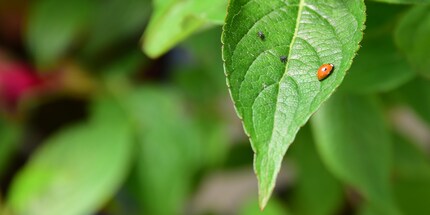
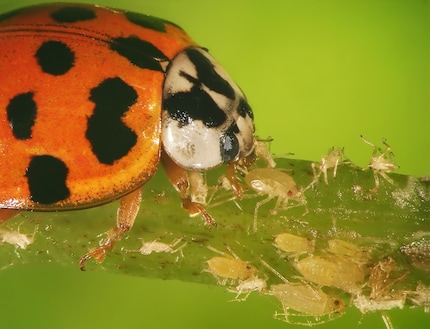
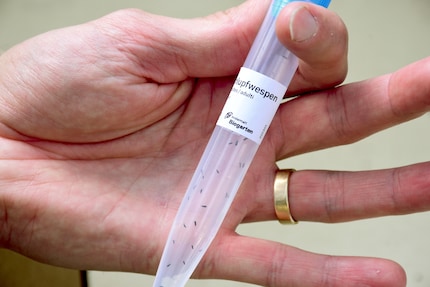
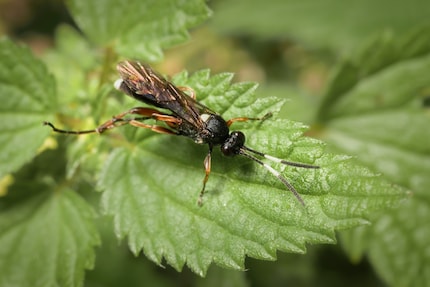
Silvan releases the ichneumon wasps into the air. «It’s best to put them in every two weeks so that there are always enough live ones,» he says. An ichneumon wasp has tracked down a moth. It uses a tube-like organ called an ovipositor to pierce its way inside its prey and lay eggs. Warning: things are about to get seriously gross. After that, the ichneumon wasp larvae hatch inside the moth, proceeding to eat it from the inside out. They pupate within the remains of their victims before hatching as wasps à la science-fiction horror classic Alien. Then the whole process begins again. Unless they run out of food or the hatchlings get eaten by predatory wasps. It’s a classic case of «eat or be eaten».
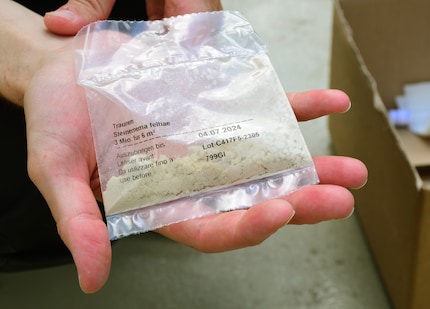
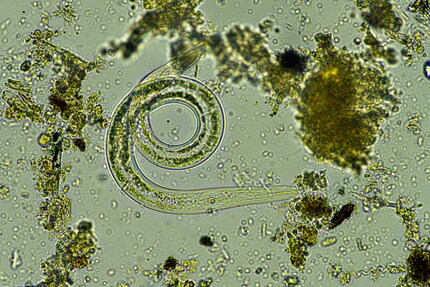
I grimace. Let’s just say, I prefer little nematodes. Silvan pours them into a watering can and waters the plants with the mixture. Beneath the soil, the nematodes use chemical signals to locate the fungus gnat larvae. Once they’ve tracked down their prey, they worm their way into the larvae’s orifices. Using a toxic bacterium carried on their bodies, the nematodes poison the larvae and multiply inside them. As soon as they run out of food, they die too. They’re then decomposed by even smaller microorganisms in the soil.
I’m fascinated by these cycles. So much so that I want to move right onto the predatory mites. Remember those orange dots scurrying around on stones that you might have squashed at school? Well, you should have let them be. These very dots are, in fact, predatory mites. Preying on spider mites and other mites, they can be used as preventative pest control against fungus gnat larvae or flea beetles. To sum it up, they truly are all-rounders.
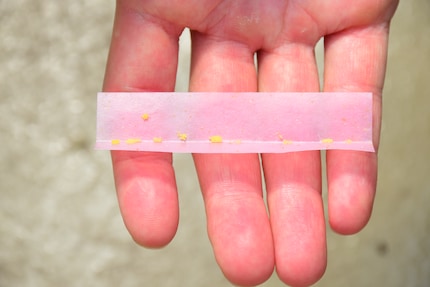
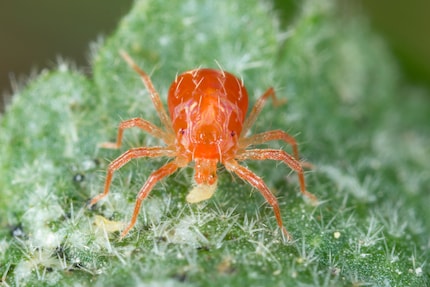
Not all pests can be controlled by beneficial insects such as predatory mites. According to Silvan, when it comes to ants, which have hardly any antagonists, traps are the only effective solution. At least, they have been until now. Andermatt Biogarten AG’s research and development teams are constantly working on new beneficial organisms. Matthias Kohler, Head of Product Management and Purchasing, isn’t willing to reveal what they are. Introducing them, he says, could take some time due to Switzerland’s complex licensing requirements. But as the saying goes, good things take time.